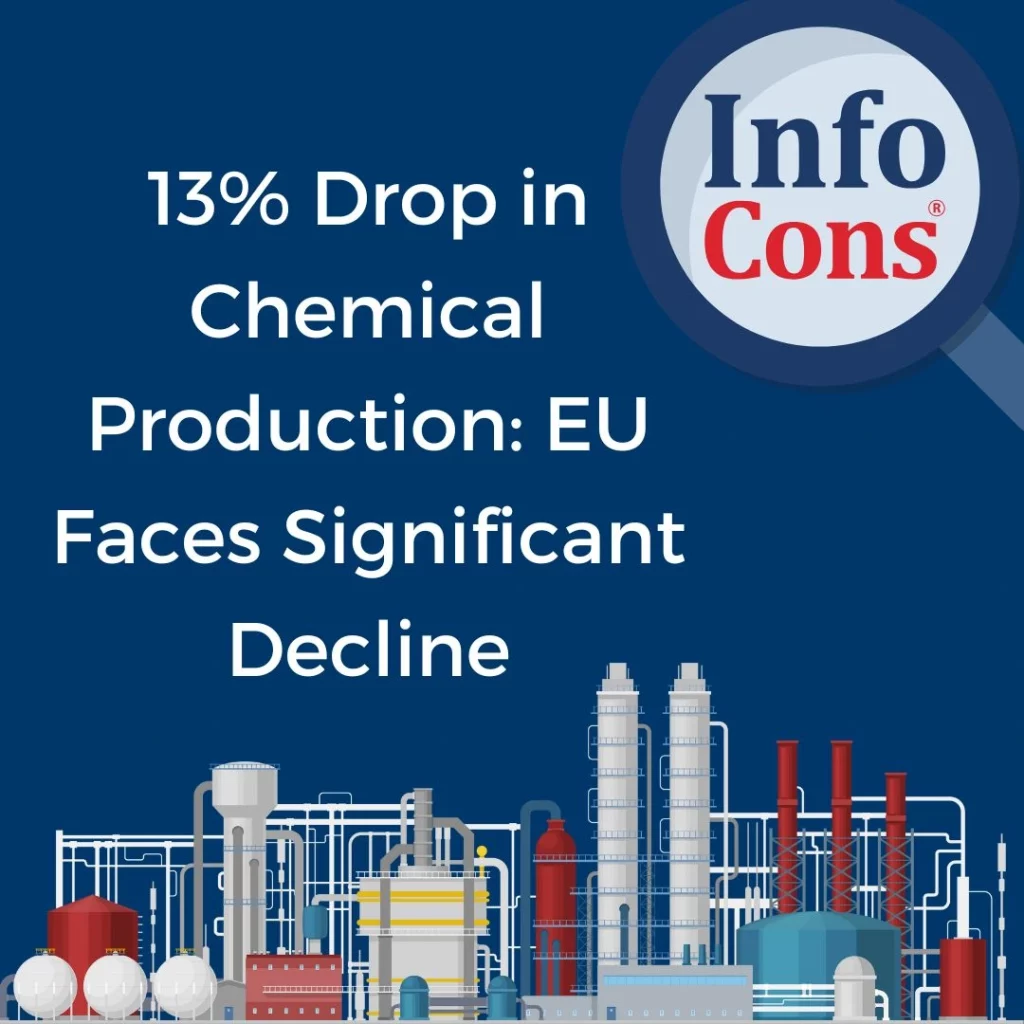
The European chemical industry, a key sector for manufacturing and industrial processes, experienced a notable contraction in 2023. Both production and consumption of industrial chemicals, including hazardous and non-hazardous types, fell significantly compared to 2022. This trend reflects broader challenges in the sector, signaling potential shifts in industrial demand and environmental priorities.
Key Figures : Production and Consumption Trends
In 2023, the EU produced a total of 218 million tonnes of industrial chemicals, a 13% decline from the previous year. Meanwhile, consumption also decreased by 14%, totaling 227 million tonnes. These figures highlight a consistent downturn in the industry across both supply and demand.
Read also : A Safer Digital Future : Strengthened Cybersecurity Regulations Come into Force
Hazardous Chemicals : A Closer Look
Production Trends
The production of chemicals hazardous to health dropped by 11% in 2023, amounting to 167 million tonnes. Chemicals hazardous to the environment saw a smaller decline of 4%, with production totaling 68 million tonnes. Notably, there is an overlap between these two hazardous categories, meaning some chemicals fall into both classifications.
Consumption Trends
Consumption patterns mirrored production declines. Chemicals hazardous to health saw a 14% decrease in usage, while those hazardous to the environment dropped by 12%, reaching a total of 57 million tonnes. This reduction aligns with overall industry shrinkage and suggests changing priorities or reduced demand.
Read also : The Role of Consumer Empowerment in Achieving a Green Transition
Long-Term Trends : A Shifting Industry
Looking back over the past two decades, the chemical industry has experienced notable fluctuations. From 2004 to 2007, production and consumption steadily grew before contracting during the 2008–2009 financial crisis. The sector rebounded in 2010, stabilizing until 2020. However, the last three years have seen consecutive declines, culminating in the significant drops recorded in 2023.
The sharp decrease in EU chemical production and consumption in 2023 underscores the industry’s vulnerability to economic and environmental pressures. As the sector adapts to evolving regulations, shifting consumer demands, and global economic uncertainty, it must also embrace innovation to remain competitive. With environmental sustainability at the forefront, the future of the EU chemical industry may depend on balancing productivity with ecological responsibility.
Read also : Intellectual Property Challenges in the Digital Age : Online Copyright Infringement in the EU
InfoCons – European Organization for Consumer Protection and Promotion of Programs and Strategies , a full member of the World Organization Consumers International, founding member of the Federation of Consumer Associations, and member of ANEC .